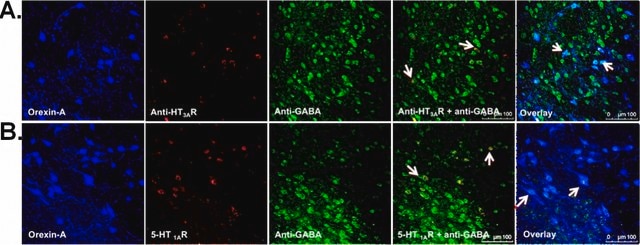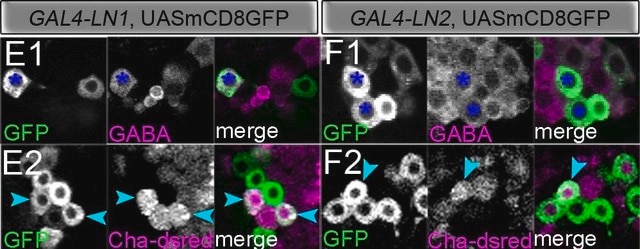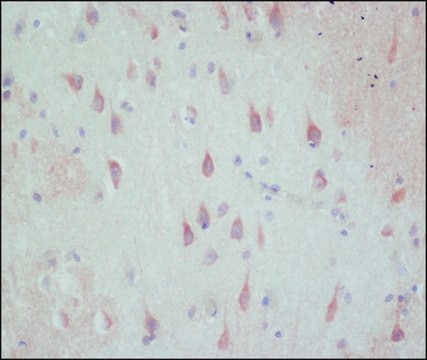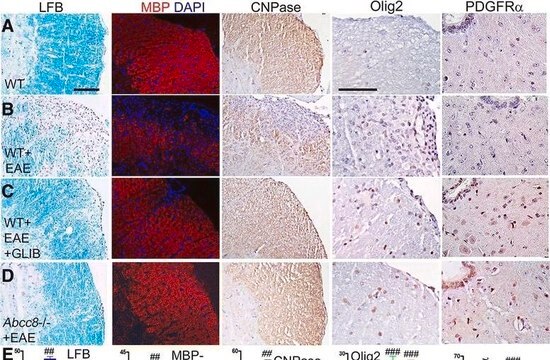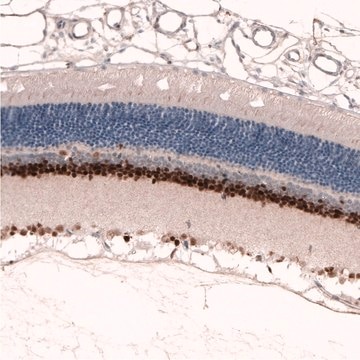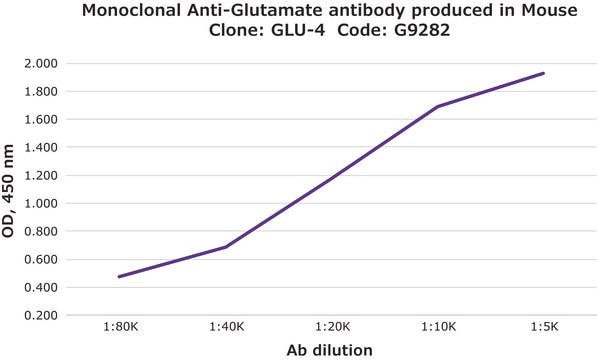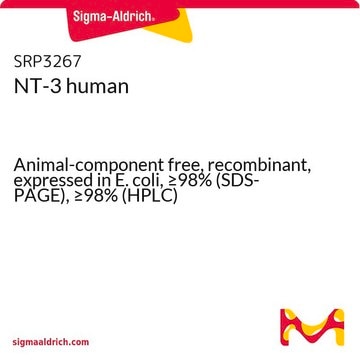ABN131
Anti-GABA Antibody
from rabbit, purified by affinity chromatography
Sign Into View Organizational & Contract Pricing
All Photos(3)
About This Item
UNSPSC Code:
12352203
eCl@ss:
32160702
NACRES:
NA.41
Recommended Products
biological source
rabbit
Quality Level
antibody form
affinity isolated antibody
antibody product type
primary antibodies
clone
polyclonal
purified by
affinity chromatography
species reactivity
rat
species reactivity (predicted by homology)
all
technique(s)
ELISA: suitable
immunohistochemistry: suitable (paraffin)
shipped in
wet ice
target post-translational modification
unmodified
Gene Information
rat ... Gabra1(29705)
General description
Neurotransmitters can be defined as chemical substances that are released by the presynaptic neuron before being bound by receptors on the postsynaptic cell surface. It has been well established that the nervous system utilizes neurotransmitters for cell signaling. Neurotransmitters can be divided into two groups; low molecular weight transmitter molecules such as biogenic amines, purines, or amino acids, and bioactive peptides, of which more than 50 members have been identified in the mammalian central nervous system. Many low molecular weight neurotransmitters are produced within the axon terminal from common cellular metabolites and packaged into synaptic vesicles. The transport and delivery of vesicles containing neurotransmitter is a highly regulated and complex process. GABA (g-aminobutyric acid) is the major inhibitory neurotransmitter in the central nervous system that is involved in the pathogenesis of certain neurological and psychiatric disorders. GABA is produced from glutamic acid in a reaction catalyzed by glutamic acid decarboxylase. GABA interacts with the GABAA and GABAB receptors, which are widely distributed throughout the nervous system and in a variety of cell types. The immunolocalization, neuronal distribution, and vesicular compartmentalization of neurotransmitter molecules and their precursors are important for understanding the modulation, regulation, and function of neurotransmitters in the nervous system.
Application
Anti-GABA Antibody is a highly specific rabbit polyclonal antibody, that targets GABA & has been tested in IHC (Paraffin) & Enzyme Immunoassay (ELISA).
Immunohistochemistry Analysis: A 1:500 dilution from a representative lot detected GABA in rat brain tissue (Note: Non-specific staining may be observed in vascular tissues.).
ELISA Analysis: A representative lot from an independent laboratory detected GABA in a competitive ELISA.
ELISA Analysis: A representative lot from an independent laboratory detected GABA in a competitive ELISA.
Quality
Evaluated by Immunohistochemistry (Paraffin) in Rat brain tissue sections.
Immunohistochemistry (Paraffin) Analysis: A 1:250 dilution of this antibody detected GABA in Rat brain tissue sections.
Immunohistochemistry (Paraffin) Analysis: A 1:250 dilution of this antibody detected GABA in Rat brain tissue sections.
Linkage
Replaces: AB131
Analysis Note
Control
Rat hypothalamus tissue
Rat hypothalamus tissue
Other Notes
Concentration: Please refer to the Certificate of Analysis for the lot-specific concentration.
Not finding the right product?
Try our Product Selector Tool.
wgk_germany
WGK 1
flash_point_f
Not applicable
flash_point_c
Not applicable
Certificates of Analysis (COA)
Search for Certificates of Analysis (COA) by entering the products Lot/Batch Number. Lot and Batch Numbers can be found on a product’s label following the words ‘Lot’ or ‘Batch’.
Already Own This Product?
Find documentation for the products that you have recently purchased in the Document Library.
Takamasa Mizoguchi et al.
Development (Cambridge, England), 147(16) (2020-08-29)
In the vertebrate ventral spinal cord, p2 progenitors give rise to two interneuron subtypes: excitatory V2a interneurons and inhibitory V2b interneurons. In the differentiation of V2a and V2b cells, Notch signaling promotes V2b fate at the expense of V2a fate.
Melissa M Martin et al.
Cerebral cortex (New York, N.Y. : 1991), 30(3), 1830-1842 (2019-10-11)
Cigarette smoking during pregnancy is a major public health concern, resulting in detrimental health effects in the mother and her offspring. The adverse behavioral consequences for children include increased risk for attention deficit hyperactivity disorder, working memory deficits, epilepsy, novelty-seeking
Tuyana Malankhanova et al.
Journal of personalized medicine, 10(4) (2020-11-14)
Huntington's disease (HD) is a severe neurodegenerative disorder caused by a CAG triplet expansion in the first exon of the HTT gene. Here we report the introduction of an HD mutation into the genome of healthy human embryonic fibroblasts through
Our team of scientists has experience in all areas of research including Life Science, Material Science, Chemical Synthesis, Chromatography, Analytical and many others.
Contact Technical Service